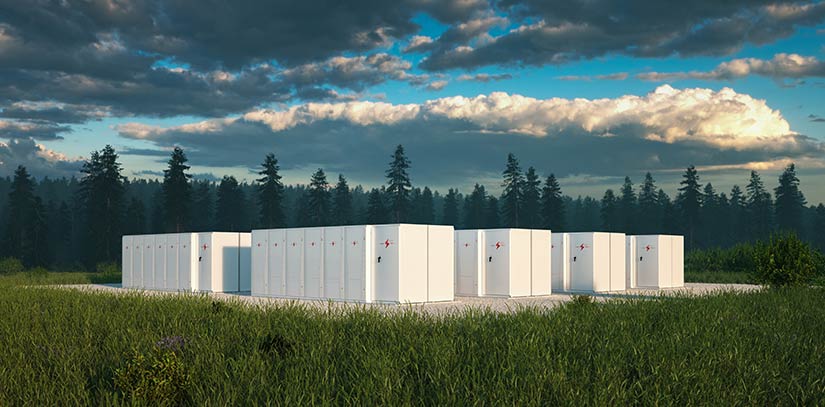Centrica Partnership Shows Optimal Strategies for Hybrid Storage Systems

Batteries are generally built for their intended application, whether for vehicles, storage, or backup. But the National Renewable Energy Laboratory (NREL) and project partner Centrica have looked beyond single battery energy storage system (BESS) types to hybrid solutions, discovering that untapped potential exists when battery types are combined and optimally controlled. The high-impact NREL collaboration with Centrica has now resulted in a design tool for hybrid BESS that helps customers optimize system selection, sizing and controls, and operation of cost-effective BESS solutions.
With growing interest in battery storage, this collaboration overcomes a gap in understanding how diverse battery designs can best serve the grid with resilient and efficient power. The design tool developed at NREL, named HYBrid Robust Energy Storage Design (HYBRED), will be used by Centrica to target cost savings and energy security for its customers’ BESS solutions, which may include multiple battery designs like low-energy batteries or second-life batteries from vehicles. In this way, HYBRED helps expand the possible combinations of storage technologies on the grid.
“This project gives us an opportunity to look into the sustainability of energy storage systems, both from the vehicle space and the grid space,” said Ying Shi, NREL principal investigator on the project.
Although a battery could be retired from its original application, it could be reused at a lower cost in other hybrid BESS solutions. The research team explored this possibility while studying optimal BESS designs: Within the Energy Systems Integration Facility (ESIF), NREL connected various battery stacks together—a high-power stack, a high-energy stack, and a second-life stack—and used Centrica’s grid-edge controller to study the trade-offs for lifetime cost and performance.
The research team used the results from HYBRED and in-lab evaluations to develop control algorithms for hybrid battery stacks. These controls were then applied to case studies of diverse battery applications. Findings suggested that hybrid BESS designs could outperform other storage solutions depending on the application, battery specifications, and regulatory environment.
The ESIF was central to the collaboration, allowing Centrica to plug and play with its proprietary technology and realize real-world results without leaving the lab. By featuring commercial solutions on actual hardware, the ESIF helped open a new opportunity space for BESS design and is equipped to discover more at even greater scale and detail.
Learn more about the Centrica-NREL collaboration on optimal BESS designs.
Last Updated May 28, 2025
